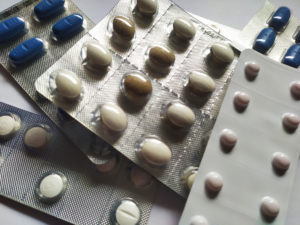In recent years, the nation’s opioid epidemic has spiraled out of control, causing almost 100,000 overdose deaths between 2006 and 2012. In Pennsylvania alone, over 26,000 people suffered fatal opioid overdoses between 1999 and 2017, with an average of 12 opioid overdoses per day in 2018. Now, 2,000 towns, cities, and counties have filed lawsuits, as part of an Ohio-based Multi-District Litigation (MDL), against 20 opioid manufacturers and distributors for the role they played in fueling the epidemic.
Now, data recently released by the Drug Enforcement Administration (DEA) has revealed that between 2006 and 2012, 76 billion opioid pills were distributed in the U.S. On top of that, nearly 90 percent of opioid tablets were manufactured by just three pharmaceutical giants:
- SpecGx (subsidiary of Mallinckrodt) – 29 billion opioid tablets manufactured.
- Actavis Pharma, 26.5 billion opioid tablets manufactured.
- Par Pharma (subsidiary of Endo) – 11 billion opioid tablets manufactured.
On the distribution side, another three big pharma companies dominated the industry, accounting for around half of distributed opioid tablets:
- McKesson – 14.1 billion opioid tablets distributed.
- Walgreens 12.6 billion opioid tablets distributed.
- Cardinal health – 10.7 billion opioid tablets distributed.
The DEA has had this data for years, but it was sealed from public viewing until the 6th Circuit appellate court in Ohio ruled that it should be public as part of the ongoing federal MDL.
Previously, I blogged about the legal action that a group of states announced against Purdue Pharmaceuticals and Sackler family members that control the company for playing a key role in driving the crisis. Purdue ranked fourth among opioid manufacturers for quantity, manufacturing 2.5 billion pills and accounting for only three percent of the U.S. market. This is not to say that Purdue Pharma’s role in fueling the crisis was not substantial. Dr. Kolodny, co-director of Opioid Policy Research at Brandeis University, notes that not pills are created equal, saying Purdue’s OxyContin “pills packed an enormous amount of oxycodone in them because of their extended-release, high-dose formulations.”
Many of the lawsuits allege that big pharma defendants drove up opioid sales by intentionally minimizing their addictive-nature, putting profit over people. The defendants, on the other hand, have been quick to place the blame on the shoulders of doctors who overprescribe opioids and victims themselves for abusing them. This data could serve to boost plaintiffs’ claim that manufacturers and distributors should be held responsible for the epidemic.
Tobi Millrood, of Pogust Braslow & Millrood, brings 18 years of complex litigation experience, with a focus on pharmaceutical and medical device litigation. Through his tireless dedication and careful attention to his client’s cases, he has earned the accolades of his peers, clients, and Courts. Tobi is a current member of both the American Association for Justice (AAJ) and Pennsylvania Association for Justice (PAJ) Board of Governors.

















Comments for this article are closed.